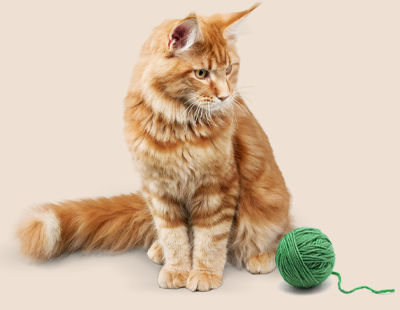How to help your chickens through a moult
As the evenings shorten and the weather begins to turn, you might find that your chickens have stopped laying and have begun to moult. This shouldn’t be a cause for concern, it is an annual occurrence for most birds and is a basic part of chicken keeping.
Depending on the age of your birds, they may have also had a moult in the springtime. For young birds, a springtime moult is often limited to the neck, especially in the case of your point-of-lay (POL) pullets.
This early neck moult can be exacerbated by giving your POL birds a Layers Ration too early on in life.
When do chickens start moulting?
On average a moult will take between 8 and 12 weeks and usually runs from September to November. Whilst your chickens may not look particularly attractive during the moulting process, it is actually very good for them.
Your hens will be able to shed any damaged or loose feathers and replace them with a glossy new set, in time for winter.
You should find that the moulting process is gradual but there can be some hens that will lose all their feathers in one go, which really is quite a sight to behold!

Tips for moulting chickens
Here are our top tips to make sure that your hens have a speedy, healthy moult:
Supplements are important
It is very normal to find that egg production slows during the moulting process.
Your hens require a tremendous amount of protein and calcium to make a new set of feathers. They will divert the protein and calcium usually reserved for egg formation into their feather-growing reserves instead.
Supplementing their usual feed ration with extra protein and calcium will help mitigate the impact of a moult on egg laying.
Did you know feathers are made of around 84% protein?
Natural feed additives like Verm-X Poultry Zest and Verm-X Keep Well can increase your hens’ protein intake by more than 15%, which will really benefit your flock as they move through their moult.
The additional herbs can also help support your hens’ immune system whilst it is at its lowest.
Add Apple Cider Vinegar to their water
To ensure a healthy immune system, add some of our Organic Apple Cider Vinegar to their water to help with the digestion and absorption of food and vital nutrients.
It also reduces the possible risk of harmful bacteria in the gut and helps strengthen their immune system.
Moulting hens can be bullied
Where feathers have been lost, new pin feathers will emerge. Your already scruffy looking hen could end up looking like a hedgehog! These pin feathers taste nice to other hens and are looked upon as a valued food source.
This can lead to severe bullying within your flock as the more dominant hens try to eat the pin feathers of those lower in the pecking order, so take care to protect a moulting hen.
When disrupted, pin feathers can bleed profusely. It is therefore worth separating any hens that are getting a hard time from their flock-mates, at there will also be the risk of infection to contend with.
Keep them comfortable
Growing new feathers can be an uncomfortable process and your chickens’ skin can become very sensitive. Minimise handling your birds during a moult and consider accelerating your coop cleaning routine to make sure they are in dry, clean bedding as much as possible.
It is definitely worth increasing the amount of bedding in the coop in the middle of the moulting period. A nice deep coop bed will keep your chickens warmer and less-stressed, which will have them back to their beautiful selves much faster.
Avoid covering them up
Whilst it may look absolutely adorable, putting your chicken in clothing during a moult is to be avoided at all costs. The new feathers need to be able to grow unobstructed.
So, whilst a knitted jumper might seem like a great solution for a chilly chicken, it could actually end up causing some serious harm.
We’d love to know any more ways that our lovely Verm-X Customers have found to really help their chickens during a moult. If you have something that you’d love to share with us, please email us at info@verm-x.com and we will add them to our list of hints and tips to help other poultry keepers.
Interested to learn more? Check out our other poultry advice articles and recipes:
A beginner's guide to keeping chickens

